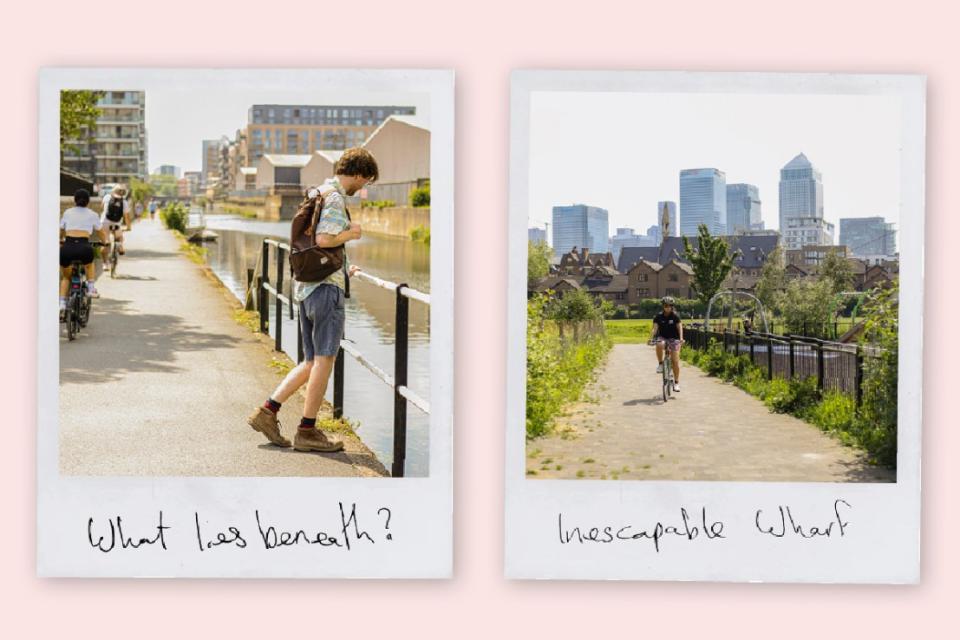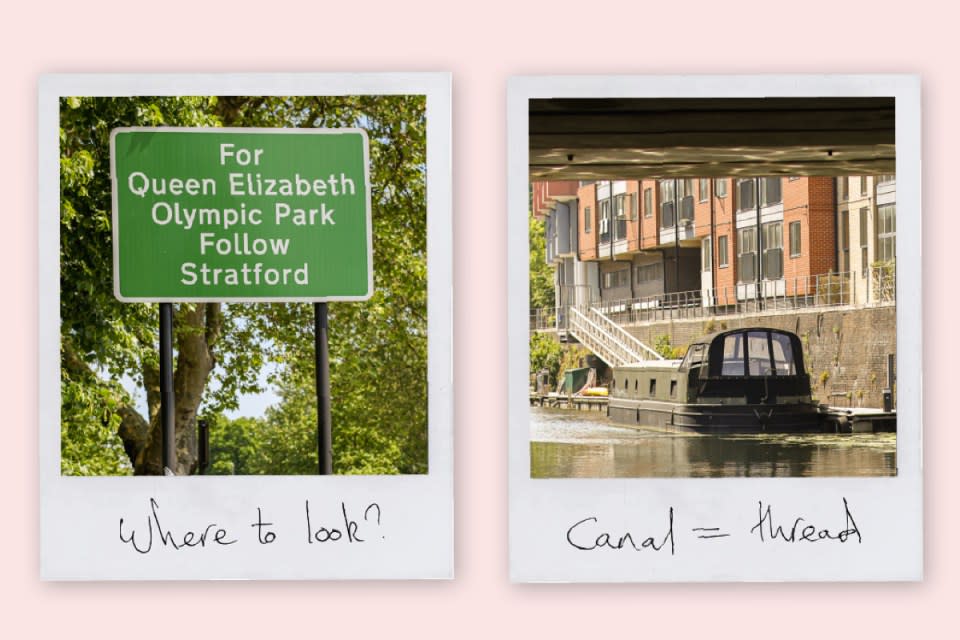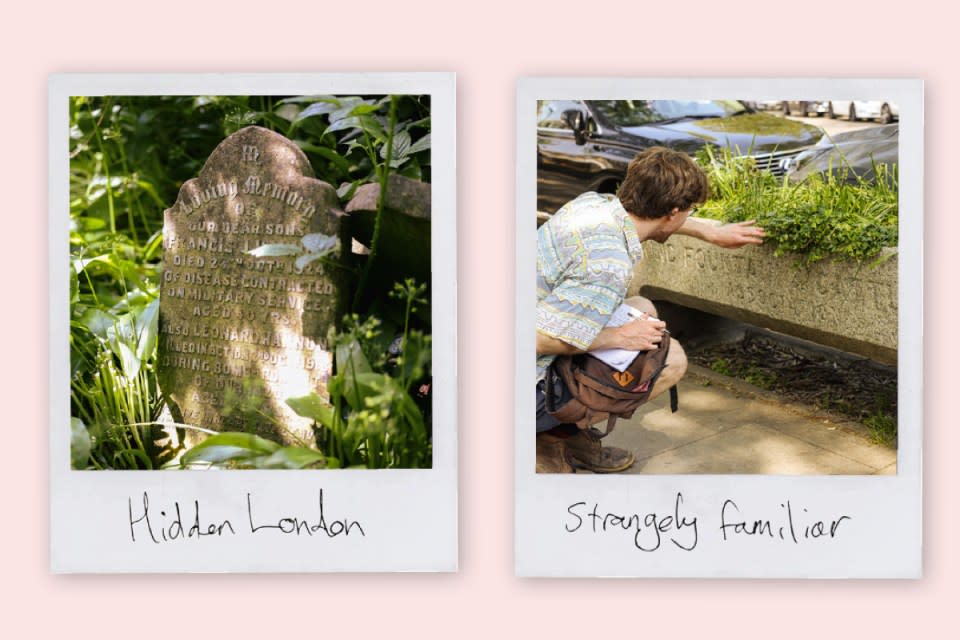Psychogeography: How to reclaim the urban environment

For more like this story about psychogeography from City A.M. – The Magazine, tap here
The modern world can feel disenchanting, stripped of the symbolism that allows us to relate to our environment in a meaningful way. The same shop fronts recur on streets from Cambridge to Cardiff and from Glasgow to Gloucester. Stories, which gather on streets and buildings like barnacles on a ship’s hull have been obliterated by the ever quickening pace of urban expansion and redevelopment. Modern town planning favours straight lines and a utilitarian directness. But there is a way to reclaim a degree of mystery, of serendipity: psychogeography.
On its most basic level, ‘psychogeography’ is a rather grand term for exploring how urban spaces make us feel. The modern city sits uncomfortably on a heap of discarded and vanished versions of itself. Psychogeography seeks to unearth these previous layers, like an archeology of the subconscious. Our role as active participants is to renegotiate our relationship with these places.
Psychogeography emerged in the melange of ideas coming out of Paris in the 1950s and 60s as a reaction to the rise of the modern capitalist city. Paris was extensively rebuilt in the 19th century by Georges-Eugène Haussmann. The cramped mediaeval city was swept away in favour of grand boulevards and sweeping parks. Purpose and order triumphed over haphazardness. This continued in the 20th century as the necessities of capitalism further defined the urban landscape. Great roads and public transport networks crisscrossed the city, taking people directly where they needed to be.
A group of avant-garde French writers known as the Situationists attempted to push back. They sought out chance occurrences – situations – which could disrupt the comfortable assumptions that framed Parisian life. The leader of the movement was Guy Debord, a cigar smoking French philosopher with a penchant for penning unreadable treatises on modern life.
Debord had a thing for walking, or what he called a ‘dérive’, from the French word for ‘drift’. He described the dérive as “a technique of rapid passage through varied ambiences”. He would let himself be carried by the natural and historical fault lines of the city, which would often run contrary to the best laid plans of city planners. Industrial cities were particularly favourable to the Situationists, Debord said, because they were “rich centres of possibilities and meanings.” Debord’s grandiose ambition was nothing less than identifying the effects of the urban environment on the human mind.
His description of a dérive implies that the city is an active force, pushing and pulling an ambling philosopher through its urban landscape. “From a dérive point of view cities have psychogeographical contours, with constant currents, fixed points and vortexes that strongly discourage entry into or exit from certain zones,” he wrote.

Will Self, one of the more prominent modern writers in the English psychogeographical tradition, has a more prosaic explanation of how Debord’s dérives actually worked. He described it as “meeting up at the Parc des Buttes Chaumont in the north of Paris, buying a few cheap bottles of red wine, getting drunk, and drifting down to the Ile de la Cite in the Seine where they’d sleep it off.”
Psychogeographers took inspiration from the figure of the flaneur, the urban stroller who wanders through modern society. The flaneur observes life without reason nor rhyme. The purposelessness of a dérive was to challenge the utilitarian nature of modern cities, the idea that travel had to be to somewhere.
In typically French style, however, the Situationists never really practised psychogeography, preferring to focus on the theory. But there is a distinctly English strand of psychogeography, centred around – but by no means limited to – the city of London, and this is a more hands-on affair.
London never experienced the kind of urban renewal that Paris went through in the 19th and 20th century, although it nearly did. In the discussions following the Great Fire of London in 1666, Christopher Wren presented plans for the city to be rebuilt along classical lines. Wren was a man of reason and order, who had recently visited Renaissance Rome. His London was to be a city of straight lines and columns.
His plans foundered on a simple fact: Londoners still owned the land on which their previous properties had been built. They wanted the old streetscape back, so London never experienced its Hausman moment. This failure from planners and developers to impose some kind of order on London’s streets means it is rich pickings for pyschogeographers.
In the oldest parts of the city the urban ambience changes virtually on a street-by-street basis. “Londoners are involuntary psychogeographers,” says Matthew Beaumont, a professor of English at University College London, labelling the practice “mischievously pseudo-scientific”. Even today London remains a hotchpotch city, physically bound to its history like some untameable organism. The realisation can be unsettling: the irrational and the unconscious lie just a layer or two beneath the smart shop fronts and neat houses.
Writer and filmmaker Iain Sinclair, for instance, claimed to have found an occult connection between six churches built by the 18th century architect Nicholas Hawksmoor. In Sinclair’s feverish imagination, the churches were placed in such a way as to form a pentagram, casting a spell over the city. This reframing of history shows the creative potential of psychogeography. The aim, Beaumont says, is to establish “subrational connections”. These connections are “idiosyncratic, eccentric and highly personalised.”
•••
I set out for a psychogeography expedition on the first temperate day of this miserable year, placing myself in the mindset of the flaneur. Debord has a number of suggestions to ensure a walk generates some psychogeographical insight, and they are surprisingly useful for a practice steeped in the most armchair of philosophies. “One can dérive alone, but all indications are that the most fruitful numerical arrangement consists of several small groups of two or three people”.
The sunny morning has little bearing, apparently: “The influence of weather on dérives, although real, is a significant factor only in the case of prolonged rains, which make them virtually impossible. But storms or other types of precipitation are rather favourable for dérives”.
Ironically, Beaumont suggests that imposing rules on a dérive can be a good way of ensuring that the walk is suitably random. For Beaumont, following the course of a buried river can be a good plan. In some sense the urban environment will reflect the natural landscape, although not always in obvious ways. I opt for Regent’s Canal in east London, a place where the scars of the industrial revolution rub shoulders with the most forward-looking elements of 21st century Britain.

I pass below St Augustine’s tower, the oldest building in Hackney, dating back to the 13th century. The tower is all that’s left of the original church after the rest of the building was pulled down some 500 years later. The churchyard around the old tower now contains a cafe. Hipsters spill out, standing where once were gravestones. The graves aren’t gone though: they’re been shunted to the side, where they glare at the cafe crowd. The past is not always intruding on the present, sometimes it’s the other way round.
If you listen closely, the voices of old Londoners can still be heard. The hopeful last words of Philip Lewis Rees, who died in Hackney in 1863, are still inscribed on his tombstone at St John of Bethlehem’s church. “He who was slain on calvary; opens those pearly gates to me”. Probably not a poet in life, next to nothing else is known about him.
I slowly follow the city south. On the cusp of Victoria Park, three trees stand on a brief patch of green. They’re cut off from the park by a single road, looming over a stone drinking trough on which is written: “Metropolitan drinking fountain & cattle trough association”. Its origin is depressingly familiar: privatised water companies failed to provide adequate drinking water; the troughs, of which there are many scattered across London, were put there by philanthropists to provide free drinking water.
By the time I reach the canalside in Bow, London’s past feels especially distant. The canal itself, the Limehouse Cut, is a thread connecting London both spatially and temporally, but its power to transport is limited by the sharp modernity of the canal path. But then, before too long, a psychogeographical remnant pushes its way to the fore: a single, square brick chimney comes into view, looming over a Lidl car park. The chimney is almost entirely nondescript; like the unknown soldier, this lone surviving structure hints at what once must have been a forest of towers lining the canal. Now it’s all that’s left, defiantly facing the glittering spires of Canary Wharf.
Psychogeography is, according to some, a dying pursuit. In Sinclair’s most recent book about the capital city, the Last London, he speaks of his pessimism about the possibility of resisting the erosion of locality. He’s even abandoned the term psychogeography: “The topic has outlived its usefulness and become a brand.” But he’s also more aware than anyone of a city’s capacity for renewal. “London stalls, revives, suffers and renews itself all the time.”
So long as we continue walking around London, reimagining it, new cities will emerge, standing on the wreckage of the old. Time to head out on a dérive of your own to discover them.

 Yahoo Finance
Yahoo Finance 